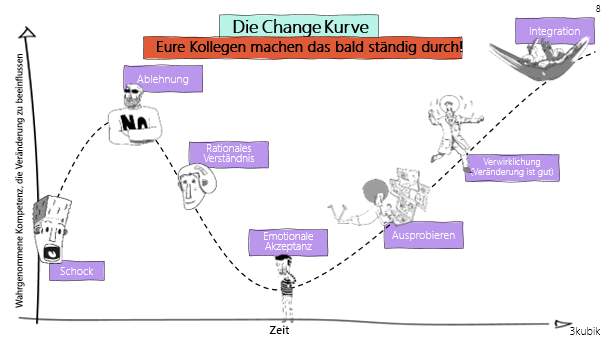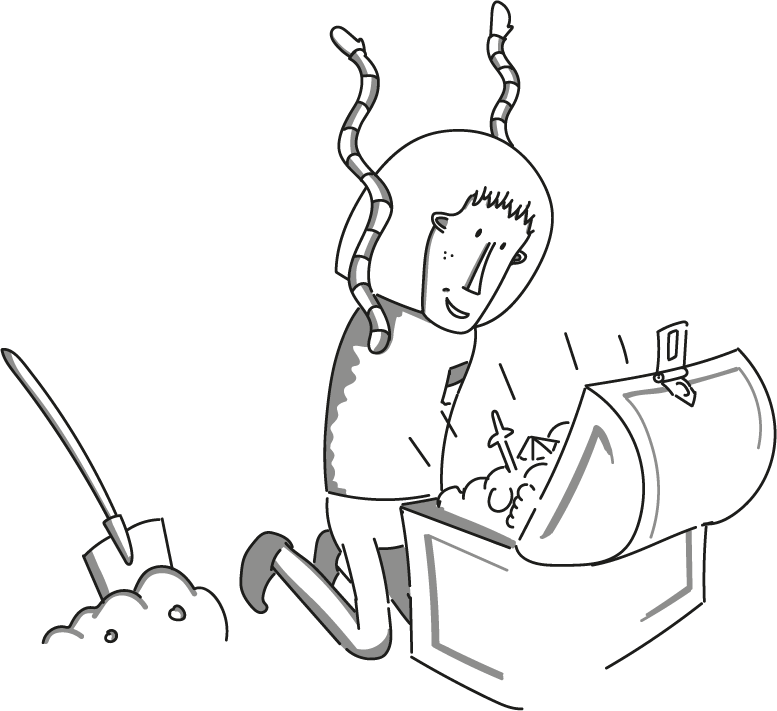Change management for AI projects –
Why, who, how
(and why you’re better off not starting without professionals and a checklist)
But let’s be honest:
An AI project is not an end in itself.
Without change management, it will remain just the latest buzzword – and you will miss the opportunity to create a real market advantage.

Why is change management so important for AI projects?
The introduction of AI means new processes, new roles, new expectations—and above all, new emotions.
👉 Studies such as those conducted by Changefirst show that projects with professional change management generate an ROI of up to 650%—and even 200% for smaller projects.
Without change management, the result is often:
great AI that no one uses,
an overwhelmed team that sees AI as a threat,
or a project that fizzles out before it creates real value.
Real-world examples:
- NHS Digital in the UK: Digital services were successfully rolled out because change agents were involved early on.
- Microsoft’s AI introduction: Success not through technology, but through employee involvement.
Conclusion: Only those who combine AI with change can turn hype into real advantage.
Who should do AI change management?

Successful AI implementations require:
- A change community – people from different departments who support the change.
- Change agents – internal champions who alleviate fears (“AI will replace me”) and highlight opportunities (“AI will free you from tedious Excel battles”).
- Management support – budget, time, and backing so that change does not become an after-hours project.
Best practice:
The Otto Group uses AI in customer service – successfully, because employees were involved from the outset.

How do you implement change for AI projects?
- Demonstrate urgency
Make it clear why AI is relevant now – not “because it’s hip,” but because competitive advantages are at stake. - Form coalitions
Get supporters from specialist departments, IT, and management on board. AI is not an IT solo endeavor. - Develop and communicate a vision
In the form of a change story: “What does AI mean for me?” – The heart, gut, and head must all be on board. - Remove obstacles
From missing data to skepticism within the team: Change means removing stumbling blocks. - Celebrate quick wins
Show small, visible successes (“AI saves us 2 hours per week”) before the big vision takes effect. - Anchor change
Create new routines so that AI doesn’t gather dust on the shelf after a few months.
And very importantly: Change is emotional.
Every change goes through a curve from shock to rejection to acceptance. This is exactly where it is decided whether AI is perceived as a threat or as support.

The LEGO Group demonstrates how a compelling change story enabled a complete turnaround—not through numbers, but through an emotional message.
KI + Change = Gamechanger
Without change management:
employees see more risks than benefits
AI is only used as a “better search” tool
managers underestimate the cultural change
the technology remains unused.
With change management:
transparency about benefits and goals emerges,
dialogue replaces office gossip,
quick wins become visible, and motivation grows.
This ensures that AI does not become a flash in the pan, but a real market advantage.


Checklist & support from the pros
But don’t worry—we’ve got you covered:
- Our Change Project Checklist—a pragmatic cheat sheet with all the important questions and steps. Simply request it via the contact form on our homepage.
- More importantly, we provide hands-on help.
Whether it’s AI implementation, multi-project change, or cultural change – we get involved, build your change community, develop your change story, and ensure that your project really takes root in everyday life.
Because: Checklist + professionals = your AI project is up and running.
Your next step
👉 And if you like: Let’s work together to make your AI project a success.
Because AI is here to stay – the only question is: Will you use it to your advantage or let it become just another buzzword?
